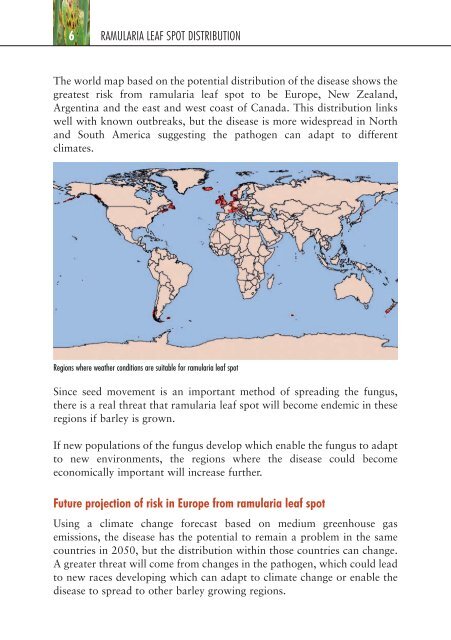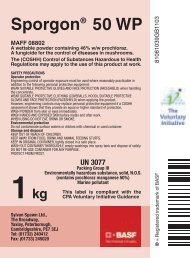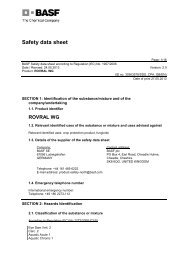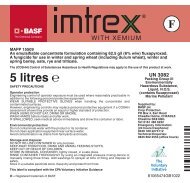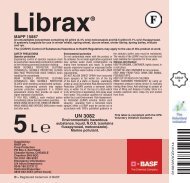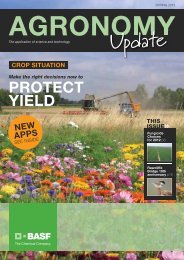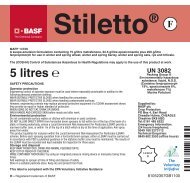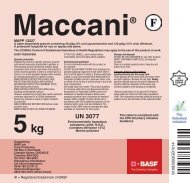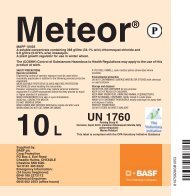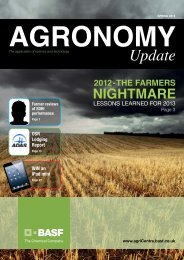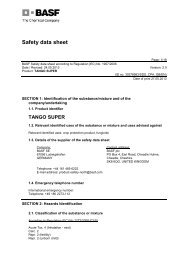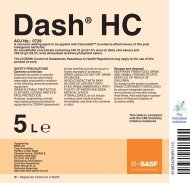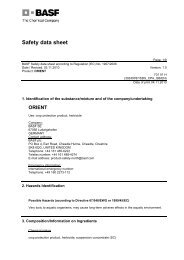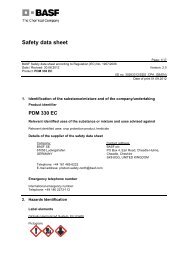a guide to the recognition and understanding of ramularia and other ...
a guide to the recognition and understanding of ramularia and other ...
a guide to the recognition and understanding of ramularia and other ...
Create successful ePaper yourself
Turn your PDF publications into a flip-book with our unique Google optimized e-Paper software.
6<br />
RAMULARIA LEAF SPOT DISTRIBUTION<br />
The world map based on <strong>the</strong> potential distribution <strong>of</strong> <strong>the</strong> disease shows <strong>the</strong><br />
greatest risk from <strong>ramularia</strong> leaf spot <strong>to</strong> be Europe, New Zeal<strong>and</strong>,<br />
Argentina <strong>and</strong> <strong>the</strong> east <strong>and</strong> west coast <strong>of</strong> Canada. This distribution links<br />
well with known outbreaks, but <strong>the</strong> disease is more widespread in North<br />
<strong>and</strong> South America suggesting <strong>the</strong> pathogen can adapt <strong>to</strong> different<br />
climates.<br />
Regions where wea<strong>the</strong>r conditions are suitable for <strong>ramularia</strong> leaf spot<br />
Since seed movement is an important method <strong>of</strong> spreading <strong>the</strong> fungus,<br />
<strong>the</strong>re is a real threat that <strong>ramularia</strong> leaf spot will become endemic in <strong>the</strong>se<br />
regions if barley is grown.<br />
If new populations <strong>of</strong> <strong>the</strong> fungus develop which enable <strong>the</strong> fungus <strong>to</strong> adapt<br />
<strong>to</strong> new environments, <strong>the</strong> regions where <strong>the</strong> disease could become<br />
economically important will increase fur<strong>the</strong>r.<br />
Future projection <strong>of</strong> risk in Europe from <strong>ramularia</strong> leaf spot<br />
Using a climate change forecast based on medium greenhouse gas<br />
emissions, <strong>the</strong> disease has <strong>the</strong> potential <strong>to</strong> remain a problem in <strong>the</strong> same<br />
countries in 2050, but <strong>the</strong> distribution within those countries can change.<br />
A greater threat will come from changes in <strong>the</strong> pathogen, which could lead<br />
<strong>to</strong> new races developing which can adapt <strong>to</strong> climate change or enable <strong>the</strong><br />
disease <strong>to</strong> spread <strong>to</strong> o<strong>the</strong>r barley growing regions.


